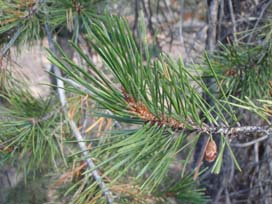
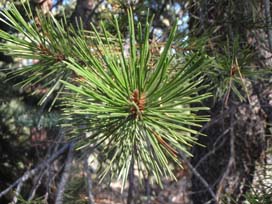
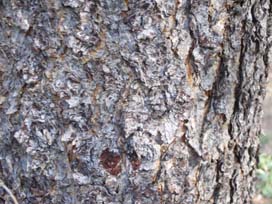
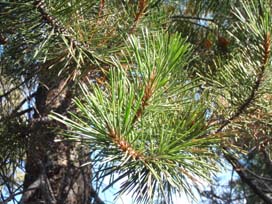
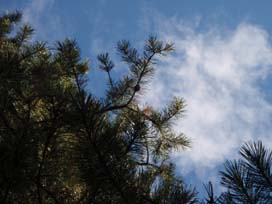
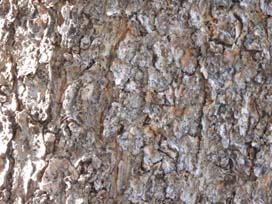
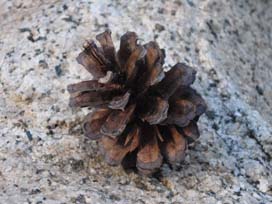
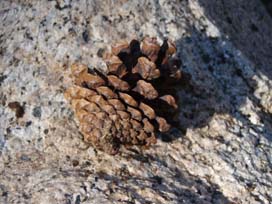
lodgepole pine
Pinus contorta var. murrayana
Family: Pinaceae.
Type: Small to medium evergreen conifer.
Leaves: Short needles in bundles of two, with a persistent bundle sheath. The two needles twist and separate in their bundle, forming a "v for victory" (or "l for lodgepole").
Twig: The bark is like oatmeal or cornflakes: small, flaky pieces with a gray to pinkish hue.
Cone: An egg-shaped, woody cone with small prickles like other yellow pines, but much smaller than others such as the ponderosa.
Miscellaneous: The lodgepole is in the yellow pine group. Lodgepoles have several recognized varieties with different ranges; the coastal variety is not fire-adapted and has an open cone, the Rockies variety has a serotinous, closed cone that is fire-dependent, and this variety, in the Sierras, has an open cone. The lodgepole is found at upper altitudes of the upper montane, up into the subalpine, generally on poor, rocky sites. It can also grow in very wet sites where other trees cannot grow, however; this is ecologically important because lodgepoles can dry out such sites and facilitate entry of other species. It is very shade-intolerant, and is not fire-resistant. It is a rapid colonizer after fire if a seed source is nearby.
 |
 |
 |
 |
 |
 |
 |
 |